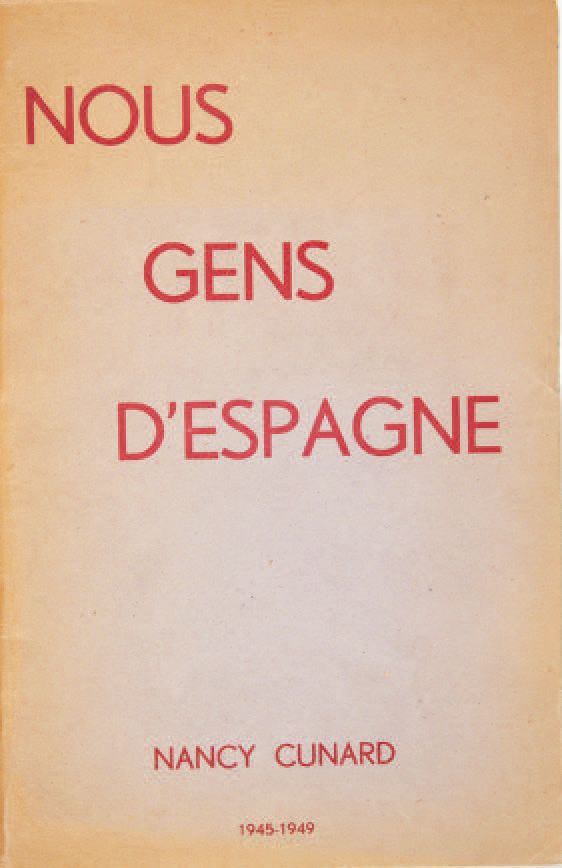Description
Nancy CUNARD. We people of Spain. 1945-1949. Perpignan, Imprimerie Labau, December 1949. Booklet in-8 of (12) pp, sewn, purple paper cover printed in red. First edition. Collection of poems composed in the immediate post-war period and paying tribute to Spain. It ends with a note of hope : The decade is complete, and I see on the bridge Their yellow and red flag, and lined up behind A blue wall... Oh! what chance of fate Does it make it so close to the purple tricolor, Flag again one day free? Limited edition of 500 copies numbered and signed by the author (n° 39). Cover faded, as always.
236
Nancy CUNARD. We people of Spain. 1945-1949. Perpignan, Imprimerie Labau, December 1949. Booklet in-8 of (12) pp, sewn, purple paper cover printed in red. First edition. Collection of poems composed in the immediate post-war period and paying tribute to Spain. It ends with a note of hope : The decade is complete, and I see on the bridge Their yellow and red flag, and lined up behind A blue wall... Oh! what chance of fate Does it make it so close to the purple tricolor, Flag again one day free? Limited edition of 500 copies numbered and signed by the author (n° 39). Cover faded, as always.
You may also like
